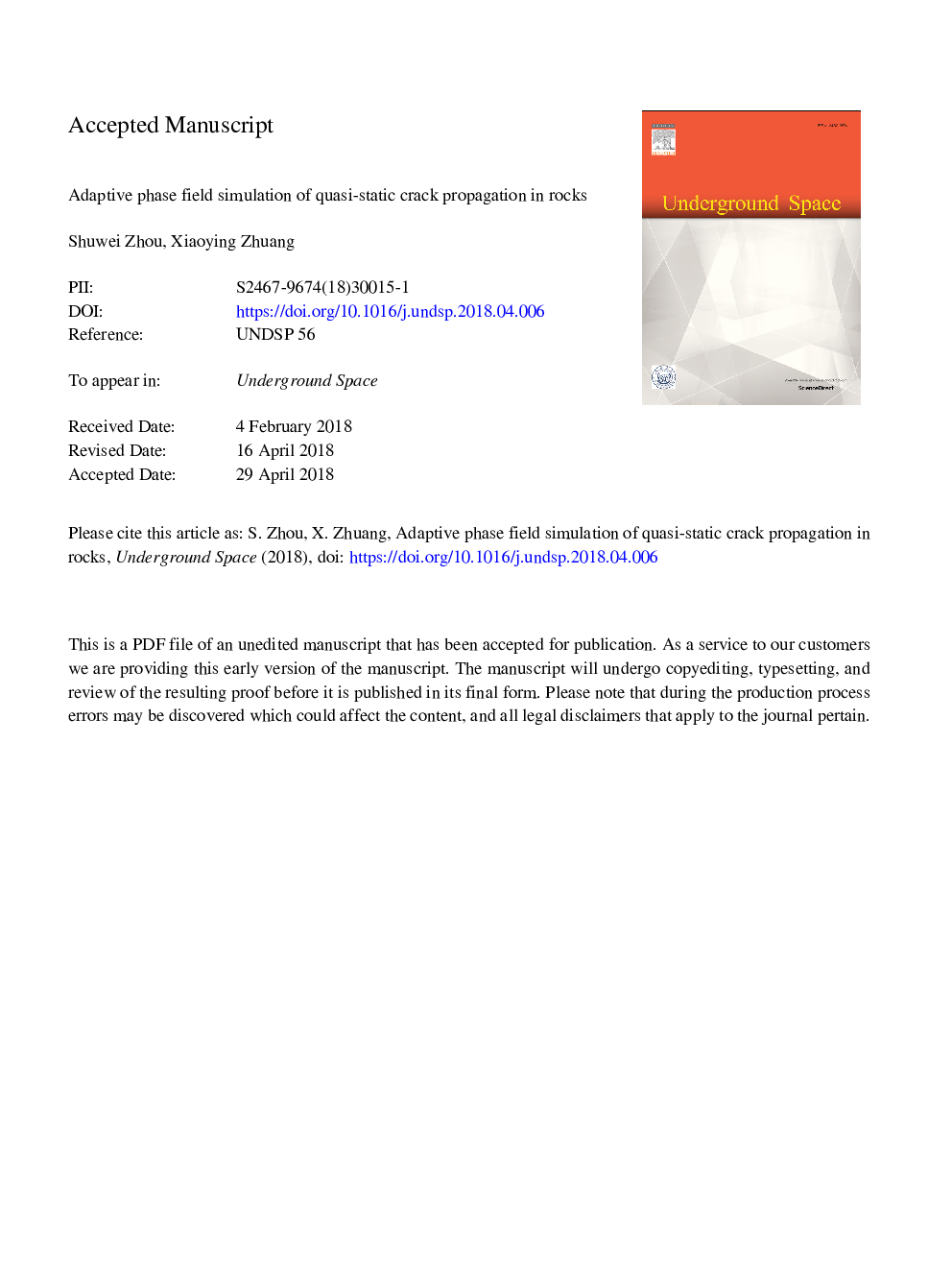| Article ID | Journal | Published Year | Pages | File Type |
|---|---|---|---|---|
| 10225471 | Underground Space | 2018 | 27 Pages |
Abstract
In this study, we present an adaptive phase field method (APFM) for modeling quasi-static crack propagation in rocks. Crack initiation due to positive strains is considered, and a numerical simulation is implemented using a commercial software, COMSOL Multiphysics. Two benchmark tests are first examined, namely, a single-edge-notched square plate subjected to respective tension and shear loadings. The crack propagation in Brazil splitting tests, 2D notched semi-circular bend (NSCB) tests, and 3D NSCB tests are subsequently simulated and analyzed. All the numerical examples indicate that the propagation of the cracks is autonomous and external fracture criteria are not required for phase field modeling. Furthermore, the adaptive remeshing scheme reduces unnecessary global mesh refinement and exhibits good adaptability for fracture modeling. The simulations are in good agreement with the experimental observations, and thereby indicate the feasibility and practicability of the APFM in rocks (even in 3D cases).
Related Topics
Physical Sciences and Engineering
Earth and Planetary Sciences
Geotechnical Engineering and Engineering Geology
Authors
Shuwei Zhou, Xiaoying Zhuang,
